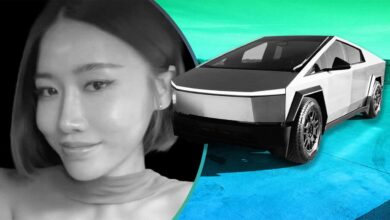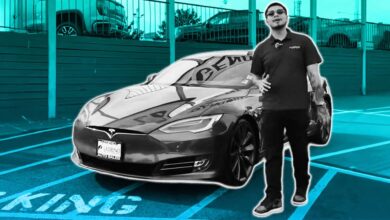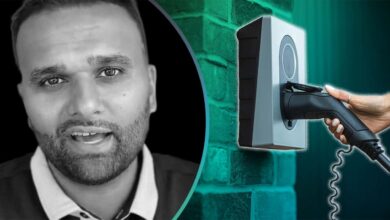Tesla FSD Outperforms Rivals In China’s Toughest Test Yet

Tesla shot itself in the foot by branding its advanced driver-assistance system as Full Self-Driving. The name has triggered lawsuits, federal investigations and a massive perception problem. If Tesla had called it something grounded and accurate, like Tesla Highway Assist or Tesla Cruise, it might have avoided a lot of headaches.
While it’s certainly gotten better over time, it doesn’t live up to the fantasy implied by the label Full Self-Driving. FSD suggests full autonomy, which best describes the Robotaxis the company is hoping to scale up. For passenger cars that people buy and drive every day, it’s a bit of a stretch. But now that the dust is starting to settle, a recent test in China shows Tesla’s advanced driver assistance systems (ADAS) outperforming rivals.
Welcome to the Friday edition of Critical Materials, your daily round-up of news and events shaping up the world of electric cars and technology.
Also on deck: Volkswagen took a $1.5 billion hit from America’s tariffs in the first half of the year, although its EV sales remain strong in Europe. Plus, battery maker LG Energy Solution has warned that the end of federal tax credits for EVs could hurt battery demand.
30%: Tesla Outperforms Chinese Automakers In ADAS Test

Photo by: Dcar Studio
TikTok’s parent company ByteDance has an automotive media and classifieds platform called Dcar. Together with China’s state media CCTV—no relation to the cameras monitoring your doorway—Dcar shut down a highway to test the ADAS in 36 cars sold in the country’s domestic market.
The scenarios were refreshingly real and chaotic. That included sudden cut-ins from other vehicles, a pitch-black construction zone with a stationary truck, aggressive merging and a dummy of a wild boar charging across the highway. There was also a straightforward autonomous emergency braking test, which most vehicles passed.
The surprising result was Tesla’s vision-based system outperforming its lidar-equipped Chinese competitors such as BYD, Xiaomi, Xpeng and Huawei in all but one of the six tests.
The Model X and Model 3 passed five out of six tests, falling short only on the wild boar encounter (Model 3) and the construction zone (Model X). Other top performers, like the Xpeng G6, BYD Z9GT EV, Wenjie M9 and Zhijie R7, managed to pass in just three out of six tests.
“Due to laws against data export, Tesla achieved the top results in China despite having no local training data,” Tesla CEO Elon Musk said on his social media platform X after the Chinese state media published the results. “Tesla is adding training data from our world simulator and test tracks to achieve 6/6,” he added.
Still, it’s worth noting that this was a test of ADAS, not full autonomy. The test drivers seem to have supervised all along, keeping both their hands on the steering wheel, which is how cars with Level 2 ADAS are supposed to be driven, unless there’s an explicit indication for “hands-free” driving under certain conditions.
It also didn’t cover all driving conditions, such as adverse weather, where experts say lidar could be crucial, instead of just relying on cameras. The full video released by Dcar Studio is embedded above and is worth watching.
60%: Volkswagen Took A Huge Impact From Trump’s Tariffs

Photo by: Volkswagen
Volkswagen lost $1.5 billion in the first half of this year due to Trump’s tariffs, the automaker said in its earnings report. It also revised its guidance for the rest of the year; earlier, it was expecting year-over-year sales to increase by 5%, but now expects sales to be flat.
Here’s more from Reuters:
CEO Oliver Blume told investors the company must intensify its cost-cutting efforts in response to the tariffs. “We need to shift our cost efforts into high gear and accelerate implementation. After all, we cannot assume that the tariff situation is only temporary,” Blume said.
The automaker’s Q2 U.S. sales were down 29%. After posting strong results in Q1, the ID.4 electric SUV saw its deliveries drop by 65% to just 1,992 units in the quarter. And some 564 units of the ID. Buzz were sold between April and June. The automaker has also temporarily halted imports of the electric van to the U.S.
The official reason for the sales pause is a third-row seat issue the company is working to fix—but rising prices from tariffs could also be a factor.
90%: Korea’s LG Energy Warns Of Reduced Battery Demand

LGES Battery Plant In Holland Michigan
Photo by: LG Chem
Korean battery giant LG Energy Solution, which is the main battery supplier for General Motors, Hyundai and Kia, has issued a warning due to the rollback of the federal clean vehicle credit, which is expiring on Sept. 30. It has said that battery demand could drop in the U.S. due to falling EV sales.
LGES has eight plants in the U.S., some of which are already up and running, while others are under construction. It has spent billions of dollars for local manufacturing of EV batteries.
Here’s more from Automotive News:
“U.S. tariffs and an early end to EV subsidies will put a burden on automakers, potentially leading to vehicle price increases and a slowdown in EV growth in North America,” CFO Lee Chang-sil said during a conference call.
However, LGES said it expected to improve profits in the second half by boosting production of batteries for energy storage systems (ESS) to offset the sluggish EV demand, while cutting or delaying investment plans.
LGES has also started producing lithium-iron phosphate (LFP) batteries for energy storage systems (ESS) in the U.S. ESS is also a bright spot for Tesla—even as the automaker’s car sales continue to fall, its energy business is booming.
Energy demand is growing rapidly in the U.S., mainly due to power-hungry AI data centers. For battery companies such as LGES and Tesla, that might provide some temporary relief as they look to offset the losses from EV sales.
100%: Does The China Test Validate Tesla’s FSD?

Photo by: Dcar Studio
Credit where it’s due: the Dcar video puts vehicles through some legitimately tough, real-world highway tests and the Model X and Model 3 appear to have handled them well. But that still does not warrant complacency. FSD remains a Level 2 system unless certified otherwise by regulatory authorities, which means eyes on the road, always.
Still, with Tesla expanding its Robotaxi pilot in Austin and eyeing a California launch soon, it raises the bigger question: Is Tesla about to offer unsupervised FSD to its customers? Or is that future still a ways off? And hey, have you taken a Tesla Robotaxi ride yet? We’d love to hear about your experience.
Have a tip? Contact the author: suvrat.kothari@insideevs.com
Source link



